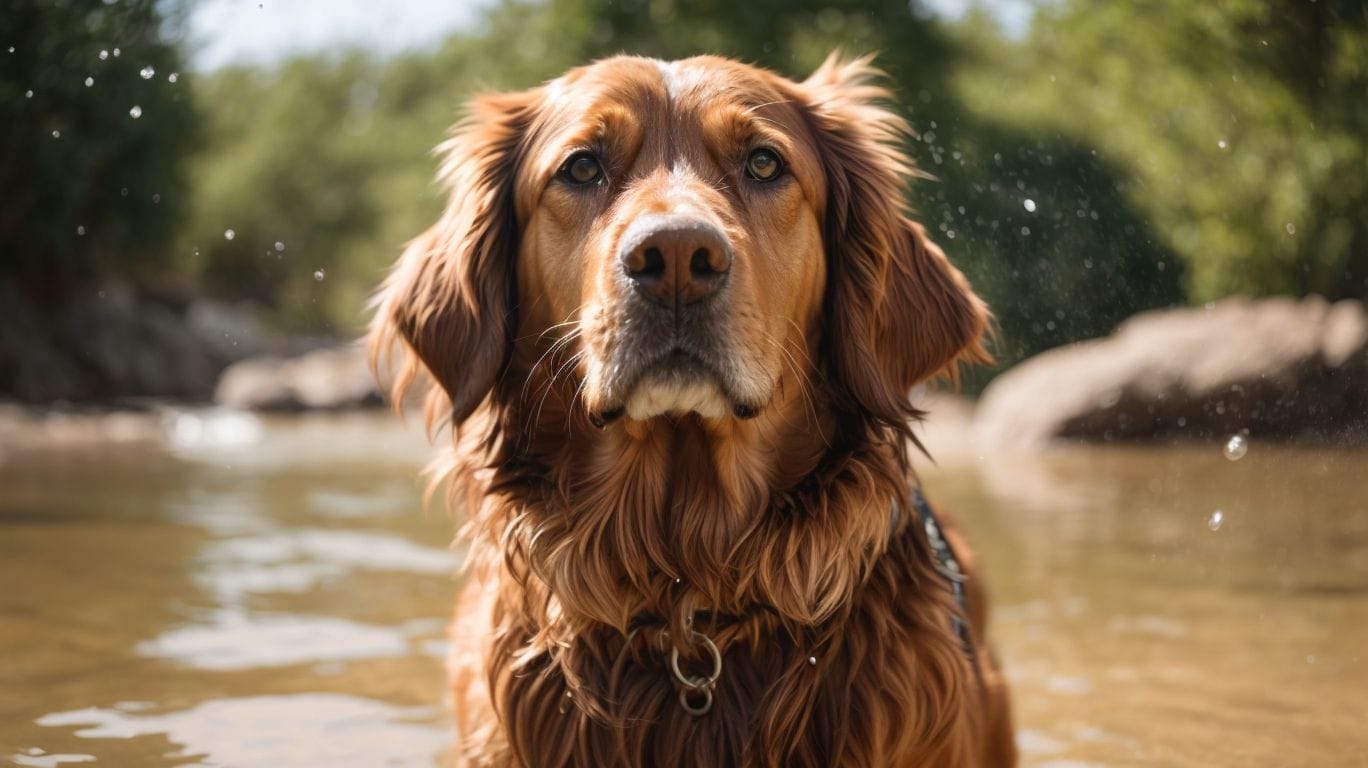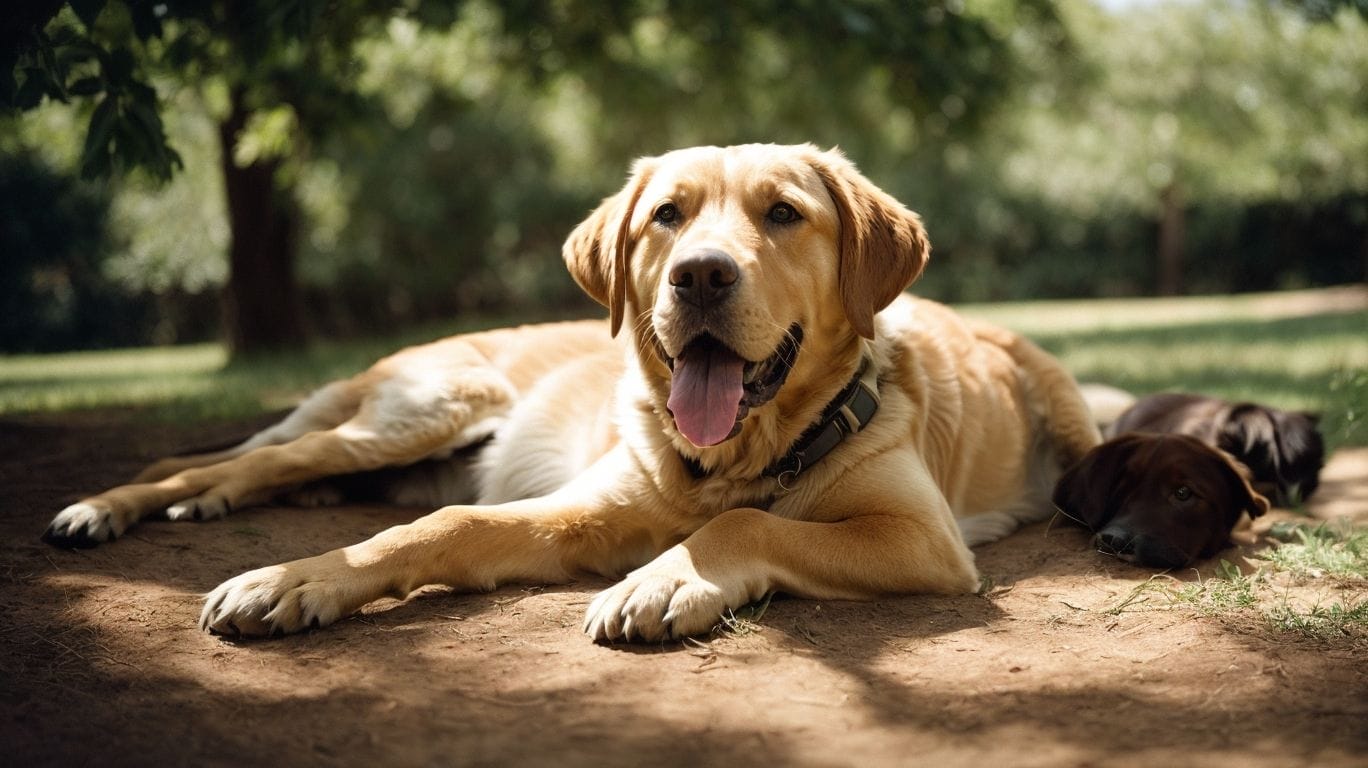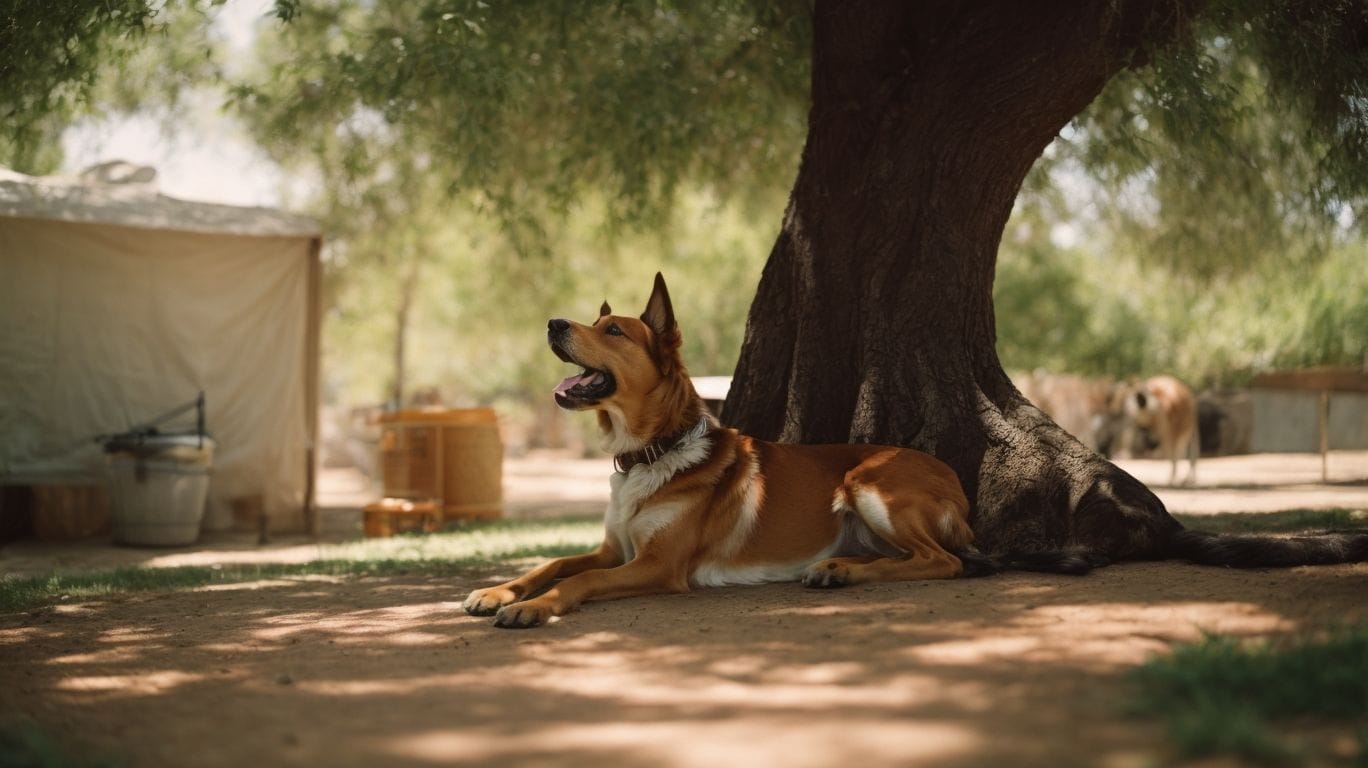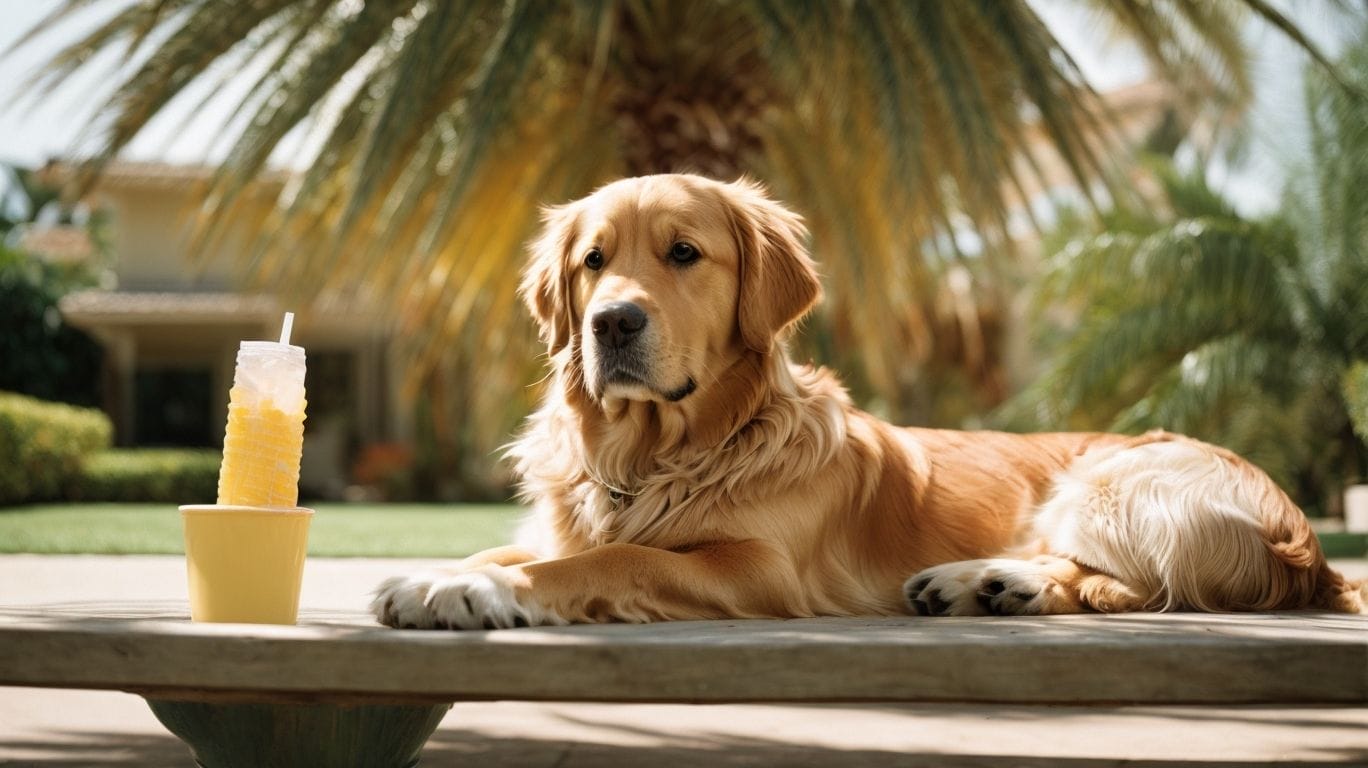Understanding how dogs regulate their body temperature is essential for responsible pet owners. While humans sweat to cool down, dogs have a different mechanism to dissipate heat.
Dogs do not sweat in the same way as humans do, primarily relying on other methods to regulate their body temperature. A study conducted by Dr. Stanley Coren, a renowned canine expert, sheds light on the sweat mechanism in dogs.
Unlike humans, dogs have sweat glands only on their paw pads. These sweat glands are minimal in regulating body temperature, as they are less efficient than human sweat glands. Instead, dogs primarily rely on panting, vasodilation, and other cooling mechanisms to dissipate heat.
Panting is a vital cooling mechanism in dogs, allowing them to evaporate moisture from their tongue and respiratory tract. Dogs use saliva on their fur, which evaporates and helps cool their body. Vasodilation, the widening of blood vessels, also plays a role in regulating blood flow and heat release in canines.
Recognizing signs of heat stress in dogs is crucial to prevent heatstroke and other heat-related illnesses. Common signs include excessive panting, drooling, lethargy, bright red gums, and collapse. Pet owners should take immediate action to help cool their dogs down and seek veterinary assistance if necessary.
To help dogs stay cool during hot weather, provide ample shade and access to fresh water. Avoid exercise during the hottest parts of the day and opt for early morning or late evening walks. Cooling mats or wet towels can also be used to provide additional relief.
By understanding dogs’ unique sweat mechanisms and taking appropriate measures to keep them cool, pet owners can ensure the well-being and comfort of their furry companions.
Key takeaways:
- Dogs do not sweat like humans: Unlike humans, dogs do not have sweat glands all over their bodies. Instead, they primarily rely on panting to regulate their body temperature.
- Paw sweating is limited in dogs: While dogs have sweat glands in their paws, the sweating is minimal and not a significant cooling mechanism. Other methods, such as vasodilation and saliva evaporation, are more effective in cooling them down.
- Recognize signs of heat stress in dogs: It is crucial to identify the symptoms of overheating in dogs, which include excessive panting, drooling, weakness, and vomiting. Taking prompt measures to cool them down can prevent heatstroke and other serious health issues.
Understanding the Sweat Mechanism in Dogs

Photo Credits: Petnarnia.Com by Jeffrey Baker
Dogs have a unique sweat mechanism compared to humans, and understanding the sweat mechanism in dogs is crucial for pet owners. Unlike humans, dogs do not sweat through their skin. Instead, they primarily cool down by panting, which allows moisture to evaporate from their tongue and respiratory tract. Dogs have sweat glands on their paws, which help to a small extent in releasing heat. This knowledge of the sweat mechanism in dogs helps pet owners recognize signs of overheating and take necessary actions to keep their furry friends cool and comfortable. If you notice excessive panting or hot paws, it is important to provide shade, water, and a cool environment for your dog to prevent heatstroke and ensure their well-being.
Do Dogs Sweat Like Humans?

Photo Credits: Petnarnia.Com by Jose Wright
While humans rely on sweat to cool down our bodies, have you ever wondered if dogs do the same? In this section, we’ll uncover whether dogs sweat like humans. Brace yourself as we delve into the fascinating world of canine sweat glands and explore the key differences between human and canine perspiration. Get ready to be surprised by the unique ways our furry friends regulate their body temperature.
Exploring the Difference Between Human and Canine Sweat Glands
Exploring the Difference Between Human and Canine Sweat Glands
Human and canine sweat glands differ in their distribution and function. While humans have sweat glands all over their bodies, dogs only have sweat glands on their paw pads. These glands help cool dogs down through evaporation and the release of sweat. Since the number of sweat glands on their paws is significantly lower than in humans, dogs rely mainly on panting to regulate their body temperature. This difference in sweat gland distribution affects the efficiency of dogs’ cooling mechanisms. Understanding these differences is crucial in recognizing signs of heat stress in dogs and taking appropriate measures to keep them cool.
Pro-tip: To help keep your dog cool during hot weather, provide plenty of fresh water and a shaded area to rest.
How Do Dogs Regulate Body Temperature?

Photo Credits: Petnarnia.Com by Mark Young
Dogs are amazing creatures, but have you ever wondered how they regulate their body temperature? In this section, we’ll dive into how dogs keep cool and maintain a comfortable internal climate. From the panting behavior that acts as a cooling mechanism to the surprising role of saliva in regulating body temperature, we’ll uncover the secrets behind their thermoregulatory abilities. We’ll explore how vasodilation and blood flow regulation come into play, ensuring that our furry friends stay chill even in the hottest of environments.
Panting as a Cooling Mechanism
Panting as a Cooling Mechanism is an essential physiological process for dogs to regulate their body temperature. Unlike humans, dogs do not possess sweat glands, making panting their primary method of staying cool. During panting, moisture evaporates from various areas, such as the tongue, nasal passages, and lungs, facilitating heat dissipation. Through rapid panting, dogs increase airflow, releasing heat from their bodies. It is crucial to ensure your dog’s comfort by providing them with fresh water and shade and refraining from exercising them in hot weather. Additionally, incorporating cooling mats or wet towels can offer relief and effectively prevent heat stress in dogs.
The Role of Saliva in Cooling Dogs
The role of saliva in cooling dogs is an important aspect of how they regulate their body temperature. Dogs regulate their body temperature by panting, which causes them to produce saliva. This saliva then evaporates from their tongue and mouth, playing a crucial role in cooling them down—the evaporation process aids in dissipating heat and ultimately lowers their overall body temperature. In addition to its cooling effect, saliva is a natural moisturizer for dogs’ mouths, preventing dehydration and maintaining their hydration levels. To support dogs’ saliva production and keep them cool, it is essential to provide them with access to fresh water at all times, especially during hot weather. Moreover, offering cooling treats or frozen toys can stimulate saliva production and assist in cooling dogs.
Vasodilation and Blood Flow Regulation
Vasodilation is crucial in regulating a dog’s body temperature and blood flow. When dogs are exposed to heat, their blood vessels expand, allowing for increased blood flow to the skin’s surface. This process increases heat dissipation through the skin, helping dogs cool down. Vasodilation also aids in bringing warm blood from the body’s core closer to the skin, facilitating heat transfer to the external environment. Through this mechanism, dogs can regulate their body temperature and prevent overheating, ensuring their overall well-being.
Can Dogs Sweat through Their Paws?

Photo Credits: Petnarnia.Com by Larry Smith
Did you know that dogs don’t sweat like humans? In our exploration of canine physiology, we ask an intriguing question: can dogs sweat through their paws? Discover the fascinating world of the anatomy of canine paw pads and the role of paw sweat glands in our four-legged friends. Get ready to uncover surprising facts and deepen your understanding of how dogs regulate their body temperature in this paw-some section.
Anatomy of Canine Paw Pads
The anatomy of canine paw pads, also known as the anatomy of Canine Paw Pads, is a crucial aspect of how dogs regulate their body temperature. Here’s a list of key points to understand:
- Paw pad structure: Canine paw pads, which are an integral part of the anatomy of Canine Paw Pads, are thick, tough, and cushioned to withstand walking and running on various surfaces.
- Sweat glands: Dogs have sweat glands on their paw pads called merocrine glands, which are a significant component of the anatomy of Canine Paw Pads and responsible for cooling.
- Sweat production: Unlike humans, dogs do not rely heavily on paw sweating for cooling. Sweating through their paw pads, as part of the anatomy of Canine Paw Pads, contributes only a small amount to thermoregulation.
- Other cooling mechanisms: Dogs primarily rely on panting, saliva evaporation, and blood vessels in their ears and face, along with the anatomy of Canine Paw Pads, for heat dissipation.
- Importance of paw care: Keeping their paw pads clean, moisturized, and protected, a crucial aspect of the anatomy of Canine Paw Pads, helps prevent injuries and discomfort.
The Role of Paw Sweat Glands in Dogs
The Role of Paw Sweat Glands in Dogs
Signs of Heat Stress in Dogs

Photo Credits: Petnarnia.Com by Jeffrey Nelson
With the summer heat approaching, we must watch our furry friends and recognize the signs of heat stress in dogs. In this section, we’ll dive into how to identify the symptoms of overheating in dogs so we can ensure their well-being and prevent any potential health risks. Stay informed and learn how to protect your canine companion from the scorching summer temperatures.
Recognizing Symptoms of Overheating in Dogs
Recognizing symptoms of overheating in dogs is crucial for their well-being, especially during hot weather or physical activity. Here are some steps to help identify signs of heat stress in dogs:
- Excessive panting and drooling
- Weakness or lethargy
- Fast or irregular heartbeat
- Vomiting or diarrhea
- Gums and tongue appear bright red
- Dizziness or stumbling
- Collapsing
To prevent heat stroke, provide shade and fresh water, and avoid strenuous exercise in hot weather. If you notice any of these symptoms, it’s important to seek veterinary care immediately.
In 2017, a heroic golden retriever named Storm saved his owner’s life by recognizing her symptoms of a heart attack. Storm pawed at his owner’s chest until she regained consciousness and could call for help. Dogs have an incredible ability to recognize and respond to various symptoms, including overheating.
Tips for Helping Dogs Stay Cool

Photo Credits: Petnarnia.Com by Eric Gonzalez
Helping our furry friends stay cool in hot weather is essential for their health and well-being. In this section, we’ll uncover some valuable tips to keep dogs comfortable during scorching times. From providing ample shade and fresh water to avoiding strenuous exercise in high temperatures, we’ll explore ways to ensure their safety. We’ll discover the benefits of cooling mats or wet towels in aiding their body temperature regulation. Let’s dive into these cooling techniques to keep our beloved dogs happy and cool.
Providing Ample Shade and Fresh Water
To ensure dogs stay cool and hydrated, it is crucial to provide ample shade and fresh water.
- Shade: Creating shaded areas in your yard using trees, tarps, or umbrellas is essential. This not only protects dogs from direct sun exposure but also reduces the risk of heatstroke.
- Fresh Water: It is important to keep a clean and filled water bowl accessible to your dog at all times. Regularly replacing the water ensures it remains cool and fresh.
- Outdoor Water Source: If your dog spends a significant amount of time outdoors, consider installing an outdoor pet fountain or providing a small pool to cool off and drink from.
In ancient Rome, providing ample shade and fresh water for their working dogs was a common practice among wealthy citizens. They believed that these measures improved their dogs’ overall health and performance. This tradition continues today as responsible pet owners recognize the significance of shade and hydration for their furry friends.
Avoiding Strenuous Exercise in Hot Weather
During hot weather, it is vital to prioritize avoiding strenuous exercise for dogs to prevent overheating and heat-related illnesses. Dogs, having a limited ability to cool down through sweating, are more susceptible to heat stress. Instead of sweating like humans, dogs mainly regulate their body temperature through panting, which aids in evaporating moisture from their respiratory system. To ensure dogs stay cool in hot weather, it is crucial to offer ample shade, provide fresh water, and refrain from engaging in any strenuous activities that can result in excessive heat buildup. Additionally, using cooling mats or wet towels can assist in lowering the dog’s body temperature.
Using Cooling Mats or Wet Towels
Cooling mats or wet towels are effective ways to help dogs stay cool in hot weather. Here are some steps to follow:
- Place a cooling mat or wet towel in a shady spot where your dog can relax.
- Ensure the cooling mat or wet towel is clean and free of any obstructions.
- Wet a towel with cool water and gently wring out any excess moisture.
- Lay the wet towel over your dog’s body, focusing on the neck, chest, and belly.
- Monitor your dog’s temperature regularly to ensure they stay cool and hydrated.
During a particularly hot summer, my friend’s dog showed signs of heat stress. They immediately grabbed a cooling mat or wet towel and placed it on their dog. The cooling effect was almost instant, and their dog seemed much more comfortable. It was a simple and effective way to keep their furry friend cool and prevent heat-related issues.
Facts:
Some Facts About How Do Dogs Sweat:
- ✅ Dogs have two types of sweat glands: merocrine glands and apocrine.
- ✅ Merocrine sweat glands function similarly to human sweat glands and help cool down the dog.
- ✅ Apocrine sweat glands release pheromones and are not primarily used for cooling.
- ✅ Dogs primarily regulate their body temperature through panting, where moisture from the tongue and lungs evaporates, cooling them down.
- ✅ Dogs can also regulate their body temperature through vasodilation, which expands the blood vessels to bring hot blood closer to the skin’s surface and cool it down.


